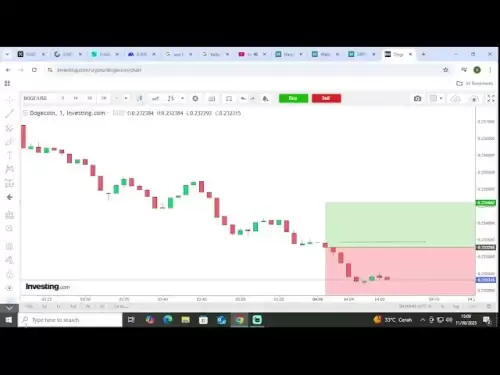-
 Bitcoin
Bitcoin $120300
1.41% -
 Ethereum
Ethereum $4296
2.75% -
 XRP
XRP $3.220
1.46% -
 Tether USDt
Tether USDt $0.9997
-0.04% -
 BNB
BNB $801.6
0.14% -
 Solana
Solana $179.9
0.22% -
 USDC
USDC $0.9998
-0.01% -
 Dogecoin
Dogecoin $0.2302
-0.24% -
 TRON
TRON $0.3405
-0.39% -
 Cardano
Cardano $0.7965
0.53% -
 Hyperliquid
Hyperliquid $44.80
2.57% -
 Chainlink
Chainlink $21.95
2.94% -
 Stellar
Stellar $0.4438
1.68% -
 Sui
Sui $3.767
-1.42% -
 Bitcoin Cash
Bitcoin Cash $584.4
3.24% -
 Hedera
Hedera $0.2554
-0.59% -
 Ethena USDe
Ethena USDe $1.001
-0.02% -
 Avalanche
Avalanche $23.57
0.00% -
 Litecoin
Litecoin $126.6
4.64% -
 Toncoin
Toncoin $3.339
0.94% -
 UNUS SED LEO
UNUS SED LEO $9.001
-0.49% -
 Shiba Inu
Shiba Inu $0.00001320
-0.92% -
 Uniswap
Uniswap $10.84
3.36% -
 Polkadot
Polkadot $3.945
-1.39% -
 Cronos
Cronos $0.1663
4.77% -
 Ethena
Ethena $0.8136
8.48% -
 Dai
Dai $0.0000
0.00% -
 Bitget Token
Bitget Token $4.391
-0.51% -
 Monero
Monero $268.0
0.80% -
 Pepe
Pepe $0.00001169
-1.57%
How to identify fake Bitcoin transaction information?
By verifying the transaction ID, block height, and examining details through blockchain explorers, you can increase the likelihood of detecting and avoiding fake Bitcoin transactions.
Feb 24, 2025 at 11:48 pm
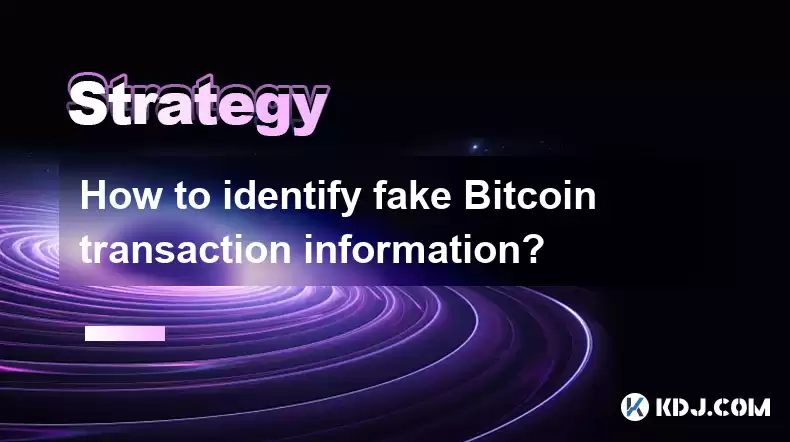
Key Points
- Verify the Transaction ID: Ensure the transaction ID corresponds to a legitimate Bitcoin transaction.
- Check the Block Height: Confirm that the transaction is recorded in a specific block on the blockchain with a valid block height.
- Examine the Transaction Details: Analyze timestamps, input and output addresses, and values to identify potential discrepancies.
- Utilize Blockchain Explorers: Leverage reputable blockchain explorers to track transaction history, view transaction details, and detect irregularities.
- Consult Security Experts: Seek guidance from cybersecurity specialists for advanced analysis and verification of suspected fake transactions.
Comprehensive Guide
1. Verify the Transaction ID
- Introduction: The transaction ID (TXID) is a unique identifier assigned to every Bitcoin transaction. It serves as a reference to locate and verify specific transactions on the blockchain.
- Procedure: To verify the transaction ID, visit a reliable blockchain explorer like Blockchair or Blockchain.com. Enter the TXID into the search bar and review the returned transaction details. Ensure that the displayed transaction matches the information you intend to verify.
2. Check the Block Height
- Introduction: The block height refers to the position of a block within the blockchain. Bitcoin transactions are recorded in blocks, and each block has a unique height.
- Procedure: When checking the block height, navigate to the transaction details section of a blockchain explorer. Locate the "Block Height" field and confirm that the block height corresponds to the one in the transaction information you are verifying. If the block height is invalid or not found, the transaction may be suspicious.
3. Examine the Transaction Details
- Introduction: Bitcoin transactions involve specific details such as timestamps, input addresses, output addresses, and values. Analyzing these details can help identify irregularities that indicate fake transactions.
- Procedure: Inspect the transaction timestamp to ensure it aligns with the expected time of the transaction. Check the input addresses to verify that they are not associated with known scams or fraudulent activities. Similarly, review the output addresses to identify if they are linked to legitimate entities or known receiving addresses. Discrepancies in any of these details could raise red flags.
4. Utilize Blockchain Explorers
- Introduction: Blockchain explorers are web-based tools that allow users to navigate and analyze the Bitcoin blockchain. They provide a comprehensive view of transactions and block information.
- Procedure: Use trustworthy blockchain explorers like Blockchair or Blockchain.com to track transaction history. Explore the transaction graph to visualize the flow of funds and identify potential anomalies. Utilize the transaction filtering feature to narrow down specific criteria and focus on relevant information. By utilizing blockchain explorers, you can gain valuable insights into transaction validity.
5. Consult Security Experts
- Introduction: Cybersecurity specialists possess advanced knowledge and tools to meticulously scrutinize suspected fake transactions. They can provide professional analysis and guidance.
- Procedure: Reach out to reputable cybersecurity companies or independent experts with proven experience in investigating blockchain-related fraud. Share the details of the suspected fake transaction, including the TXID and relevant evidence. Experts can employ forensic techniques, examine transaction patterns, and offer informed opinions on the authenticity of the transaction.
FAQs
1. How can I identify if a Bitcoin transaction is not fake?
Legitimate Bitcoin transactions can be confirmed by verifying the transaction ID, block height, and transaction details through blockchain explorers. They should not be associated with known malicious addresses or fraudulent activities.
2. What should I do if I suspect a fake Bitcoin transaction?
In case of suspicion, immediately refrain from further involvement with the transaction or associated parties. Contact security experts or reputable blockchain analysis platforms for guidance and assistance.
Disclaimer:info@kdj.com
The information provided is not trading advice. kdj.com does not assume any responsibility for any investments made based on the information provided in this article. Cryptocurrencies are highly volatile and it is highly recommended that you invest with caution after thorough research!
If you believe that the content used on this website infringes your copyright, please contact us immediately (info@kdj.com) and we will delete it promptly.
- DYDX Price Stays Afloat: Navigating Neutral Momentum with Technical Indicators
- 2025-08-11 20:50:12
- Superman Takes Flight: A Deep Dive into the Comic Program and Coin Medals
- 2025-08-11 20:30:12
- JasmyCoin's Bullish Momentum: Riding the Daily Gain Wave
- 2025-08-11 21:10:12
- Shiba Inu's Comeback Trail and the Meme Coin Mania: Can $SHIB Deliver a 12,000x Return?
- 2025-08-11 18:30:11
- Proof of Trust, Transparency, and User Safety: Keeping Crypto Real
- 2025-08-11 18:50:12
- Pudgy Penguins, Bitcoin Penguins, and the $22M Meme Coin Mania: A New York Perspective
- 2025-08-11 17:10:11
Related knowledge

How to use stop-loss orders to limit potential losses?
Aug 08,2025 at 02:01pm
Understanding Stop-Loss Orders in Cryptocurrency TradingA stop-loss order is a risk management tool used by traders to automatically sell a cryptocurr...
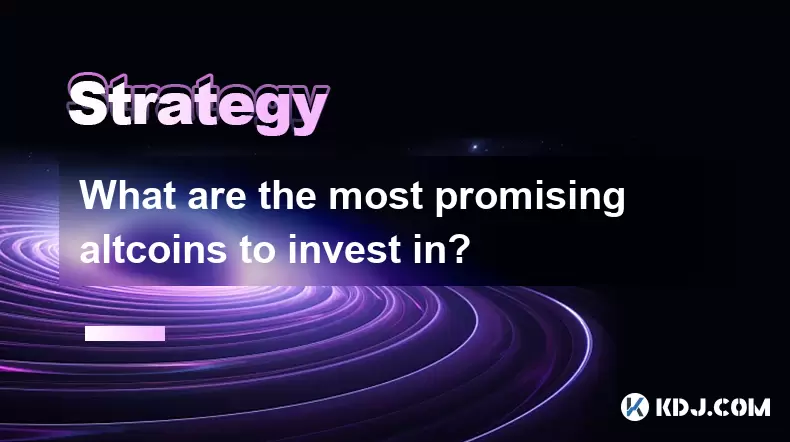
What are the most promising altcoins to invest in?
Aug 10,2025 at 11:42am
Understanding the Role of Private Keys in Cryptocurrency WalletsIn the world of cryptocurrency, private keys are the cornerstone of ownership and cont...

How to read cryptocurrency charts and use technical analysis?
Aug 08,2025 at 11:08am
Understanding the Basics of Cryptocurrency ChartsCryptocurrency charts are graphical representations of price movements over time. These charts are es...
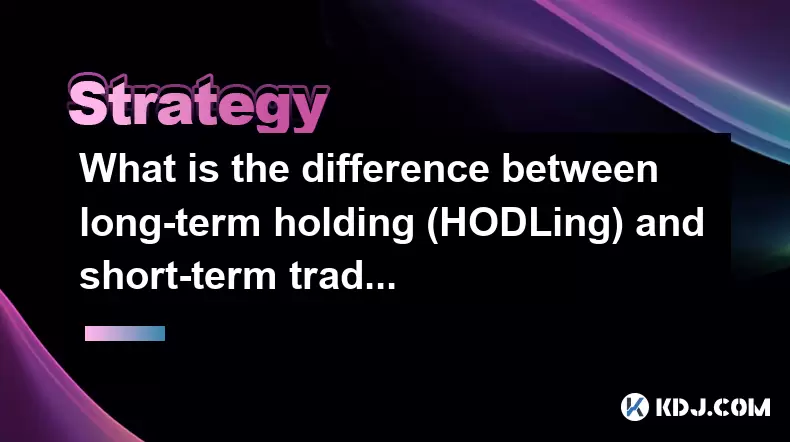
What is the difference between long-term holding (HODLing) and short-term trading?
Aug 10,2025 at 05:30pm
Understanding HODLing in the Cryptocurrency SpaceThe term HODL originated from a typo in a 2013 Bitcoin forum post and has since become a widely accep...

How to do your own research (DYOR) before investing in a crypto project?
Aug 08,2025 at 09:07pm
Understanding the Core Principles of DYOR in CryptocurrencyEngaging in due diligence before investing in any cryptocurrency project is essential to mi...
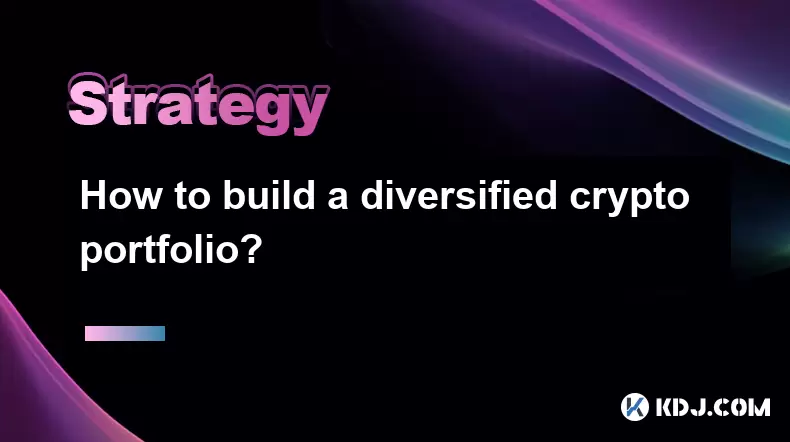
How to build a diversified crypto portfolio?
Aug 09,2025 at 12:21pm
Understanding the Importance of Diversification in CryptoDiversification in the cryptocurrency space is a strategy used to reduce risk by spreading in...

How to use stop-loss orders to limit potential losses?
Aug 08,2025 at 02:01pm
Understanding Stop-Loss Orders in Cryptocurrency TradingA stop-loss order is a risk management tool used by traders to automatically sell a cryptocurr...

What are the most promising altcoins to invest in?
Aug 10,2025 at 11:42am
Understanding the Role of Private Keys in Cryptocurrency WalletsIn the world of cryptocurrency, private keys are the cornerstone of ownership and cont...

How to read cryptocurrency charts and use technical analysis?
Aug 08,2025 at 11:08am
Understanding the Basics of Cryptocurrency ChartsCryptocurrency charts are graphical representations of price movements over time. These charts are es...

What is the difference between long-term holding (HODLing) and short-term trading?
Aug 10,2025 at 05:30pm
Understanding HODLing in the Cryptocurrency SpaceThe term HODL originated from a typo in a 2013 Bitcoin forum post and has since become a widely accep...

How to do your own research (DYOR) before investing in a crypto project?
Aug 08,2025 at 09:07pm
Understanding the Core Principles of DYOR in CryptocurrencyEngaging in due diligence before investing in any cryptocurrency project is essential to mi...

How to build a diversified crypto portfolio?
Aug 09,2025 at 12:21pm
Understanding the Importance of Diversification in CryptoDiversification in the cryptocurrency space is a strategy used to reduce risk by spreading in...
See all articles


























